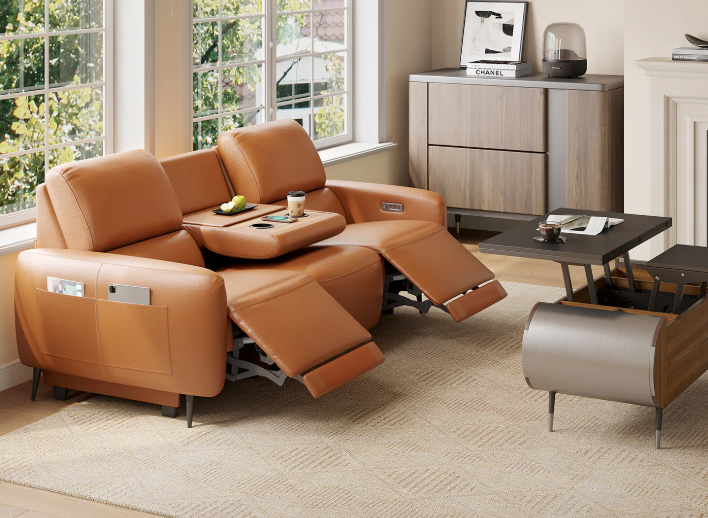Moving in together mixes romance with logistics. It means lots of fun little moments together, but it also means cardboard boxes (a lot of them!). You are combining furniture, but you’re also blending habits, schedules, and sometimes bank accounts. The moving process can be thrilling, but it can also test your patience and relationship. To keep things smooth, you should have a plan.
This guide walks you through the practical side of moving in as a couple. It offers tools to ease the transition so you can focus on enjoying the milestone.
Create a Shared Moving Checklist
The first mistake couples make is assuming they’re on the same page. A shared checklist keeps you both on the same page. Write down everything (big and small) and decide who handles each task.
Here are some basic items to add to a moving checklist for couples:
- Pick a move date: Book time off and give notice to landlords.
- Inventory both homes: Mark items to keep, donate, or sell.
- Hire help: Some movers offer couples moving services designed for small households.
- Pick a packing day: Label boxes with both names and the target room.
- Update utilities: Set transfer dates for gas, water, and electricity.
- Change address: Cover banks, subscriptions, and ID cards.
- Build an essentials box: Keep chargers, toiletries, and two days of clothes.
- Talk finances: Decide how to split costs for movers, rent, and groceries.
A shared checklist removes guesswork. Use a digital tool like Google Sheets. Assign names to each task. Both partners see progress in real time.
How To Divide Money Fairly

Finances usually get trickier once you move in. You share rent, internet, and groceries now, but incomes aren’t always equal. Some couples split 50/50. Others pay in proportion to earnings. What matters is that you talk it out and agree before money becomes a fight.
Your solution will be very personal, but here are the common financial splits:
- Breadwinner approach: One partner handles all expenses.
- Proportional split: Each partner pays a share of rent and bills based on income.
- Joint account: Both deposit a set amount into a shared account. All household bills pull from it.
- Designated expenses: One covers rent, the other handles utilities, food, or car payments.
A moving budget for couples also helps. Beyond the truck or movers, you’ll face deposits, duplicate furniture you’ll want to replace, and maybe even a bigger grocery bill. If you plan together, the move will set the tone for how you handle money as partners.
Inventory, Purge, and Decide What To Keep
Moving in together means doubling up on items. Two couches. Two toasters. Three sets of sheets. This creates clutter and conflict.
The best approach is simple. Inventory everything. Measure furniture to see what fits. Then divide it into four piles:
- Keep
- Donate
- Sell
- Trash
Be honest about sentimental items. One partner’s worn recliner might carry years of memories. Another’s chipped mug might feel irreplaceable. Respect those attachments, and agree on compromises.
Selling duplicates can cover moving costs. Donating to charity lightens your load and helps others. Trashing broken or oversized items frees space in your new home.
Book Movers and Choose the Right Service
DIY moves sound cheaper until you’re dragging a mattress down three flights of stairs while snapping at each other. Professional movers aren’t just for people with big houses, either. Many offer flexible services, including loading, unloading, or just labor.
When my partner and I moved in together, we tried to manage the process ourselves. Halfway through, we realized we were in over our heads. We called Zip To Zip Moving Company, a local service with a couples-focused service. They sent a small crew who handled both apartments in one trip. They understood that we were merging two small homes, not moving to a four-bedroom house. That kind of help made a long, stressful weekend a lot easier.
Hiring movers won’t solve every challenge, but it does give you space to focus on decisions only you can make.
Avoiding First-Week Fights
The first week together often reveals how different your habits are. Dishes left in the sink. Shoes piled by the door. One of you might need silence at night, while the other stays up with Netflix.
Talk about chores before routines set in. Divide by preference if you can. If one likes cooking, the other cleans. If one hates laundry, maybe they handle trash runs instead. It doesn’t have to be even. It just has to feel balanced.
Privacy is another piece. Moving in doesn’t erase your need for alone time. Decide how you’ll create space for it. A small desk in the corner might be one partner’s office. An evening walk might be the other’s reset button. The point isn’t to respect each other’s needs and preferences.
Making the Place Feel Like Home (for Both of You)

The biggest trap couples fall into is letting one apartment “swallow” the other. Suddenly, it can feel like you just moved into your partner’s place, with your stuff squeezed in around the edges.
Blend your styles. Hang both sets of photos. Keep a mix of furniture, even if it looks mismatched at first. Buy at least one new piece together to mark the start of this shared home.
Creating rituals also helps. Cook a first meal in the new kitchen, even if it’s takeout. Open a bottle of wine while sitting on the floor surrounded by boxes. These small choices turn moving day into a memory instead of just a task.
Important Questions To Ask
Many couples assume life won’t change much after a move-in, but even couples that know each other well notice all the little habits, details, and friction points once they share space. A few conversations make the difference between smooth sailing and chaos. Ask questions like:
- Whose lease are you breaking, and how will you split the costs?
- Whose name goes on the new lease and utility bills?
- What happens if one of you travels often or works late nights?
- How will you handle hosting friends or overnight guests?
These questions aren’t romantic, but they protect your relationship from avoidable stress. Think of them as part of the foundation of the home you’re building.
A Couple of Closing Points
Moving in together tests your teamwork while strengthening your bond. The key is preparation. A shared checklist keeps you aligned. Fair money splits build trust. Clear ground rules make cohabitation smooth.
You can DIY a move if you have time and energy. Or you can hire help. My own story with Zip To Zip showed me that moving services for couples can make all the difference. Whichever route you take, remember the goal is the same: start a new life together in a shared home that feels like yours.





















